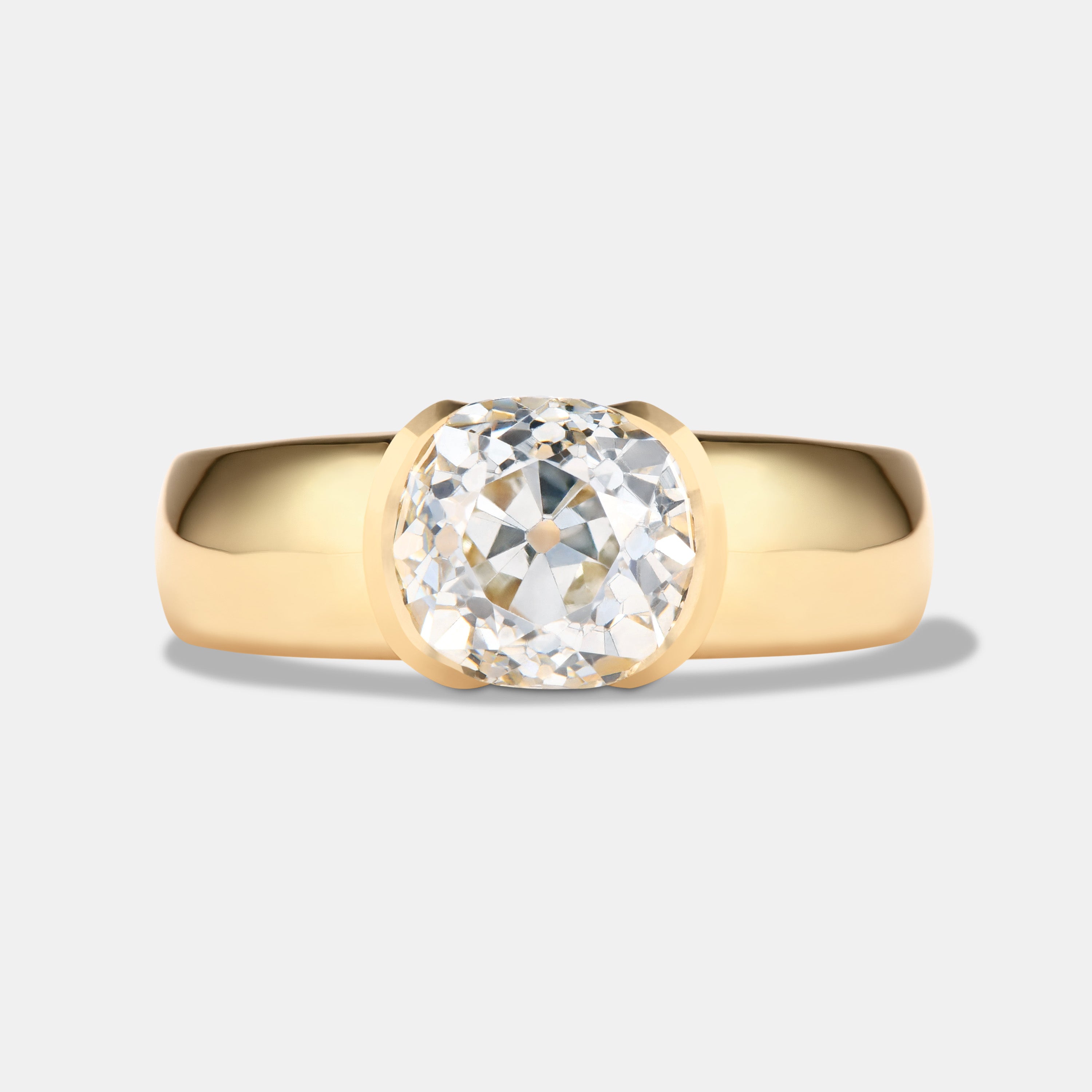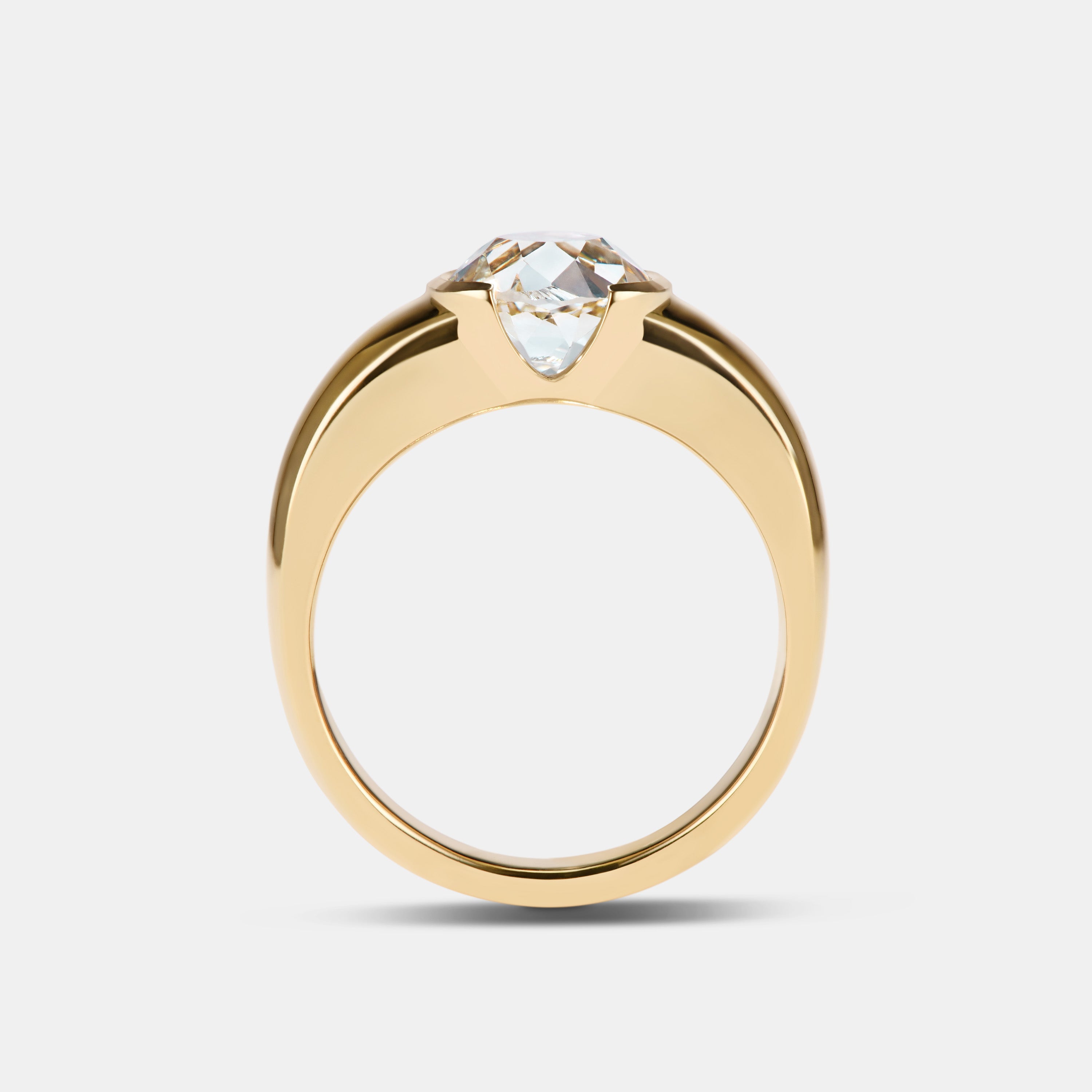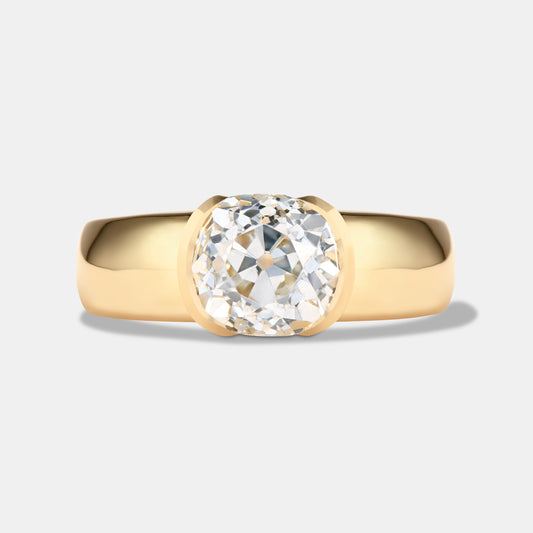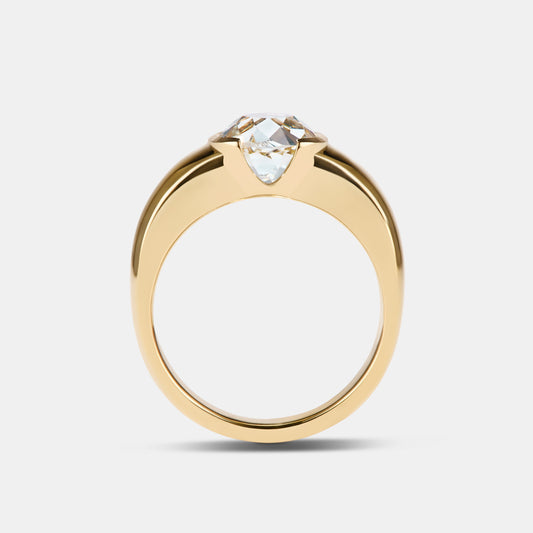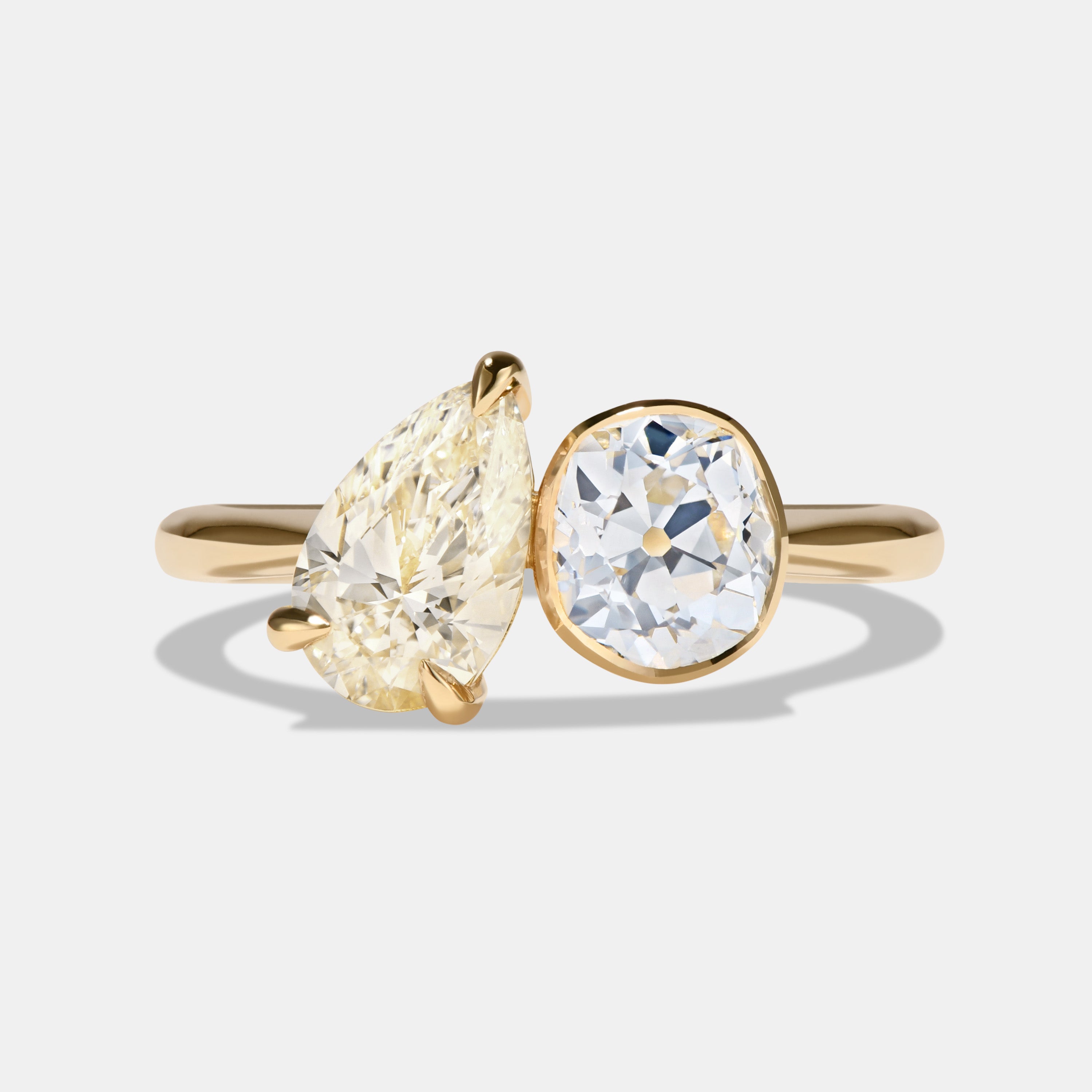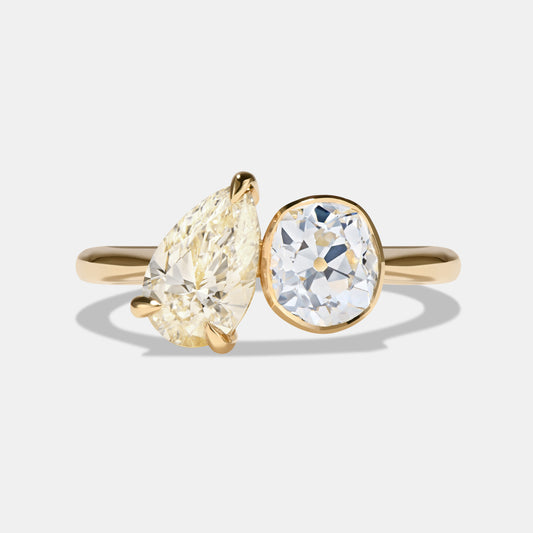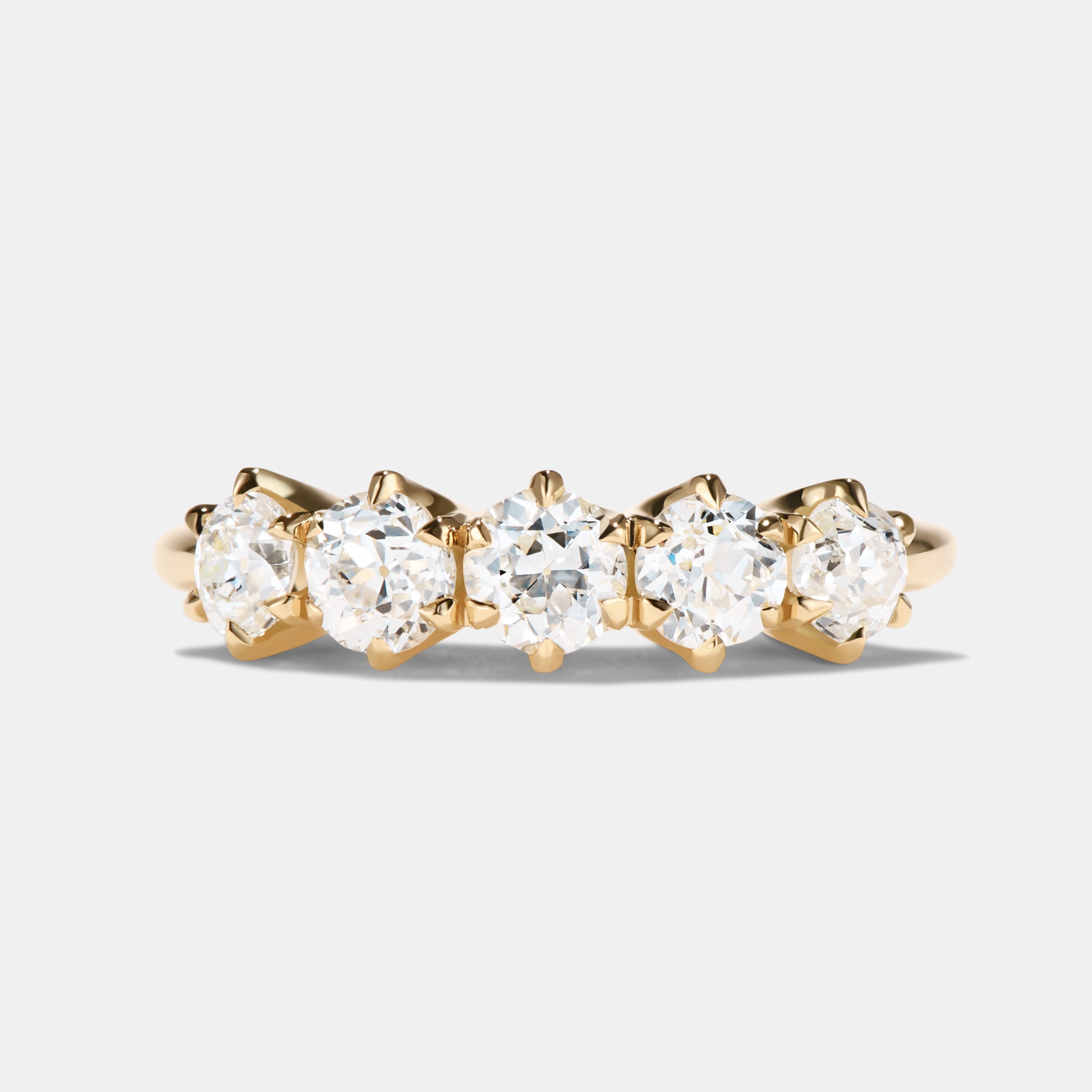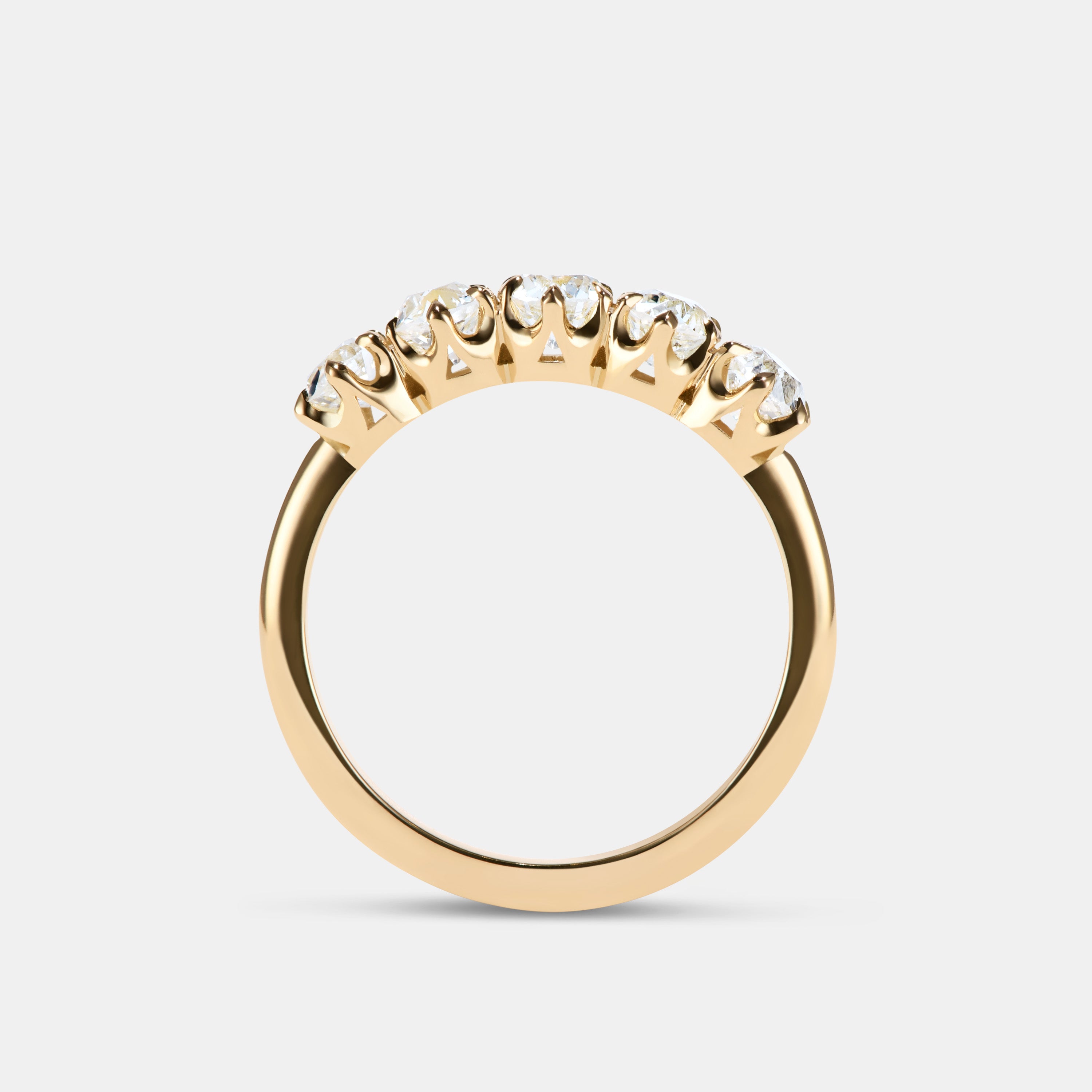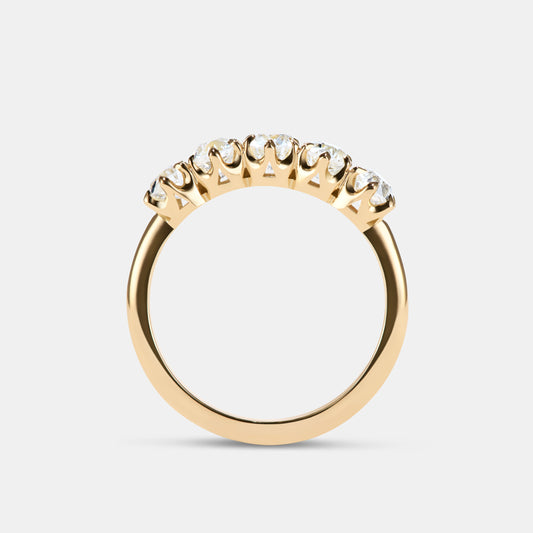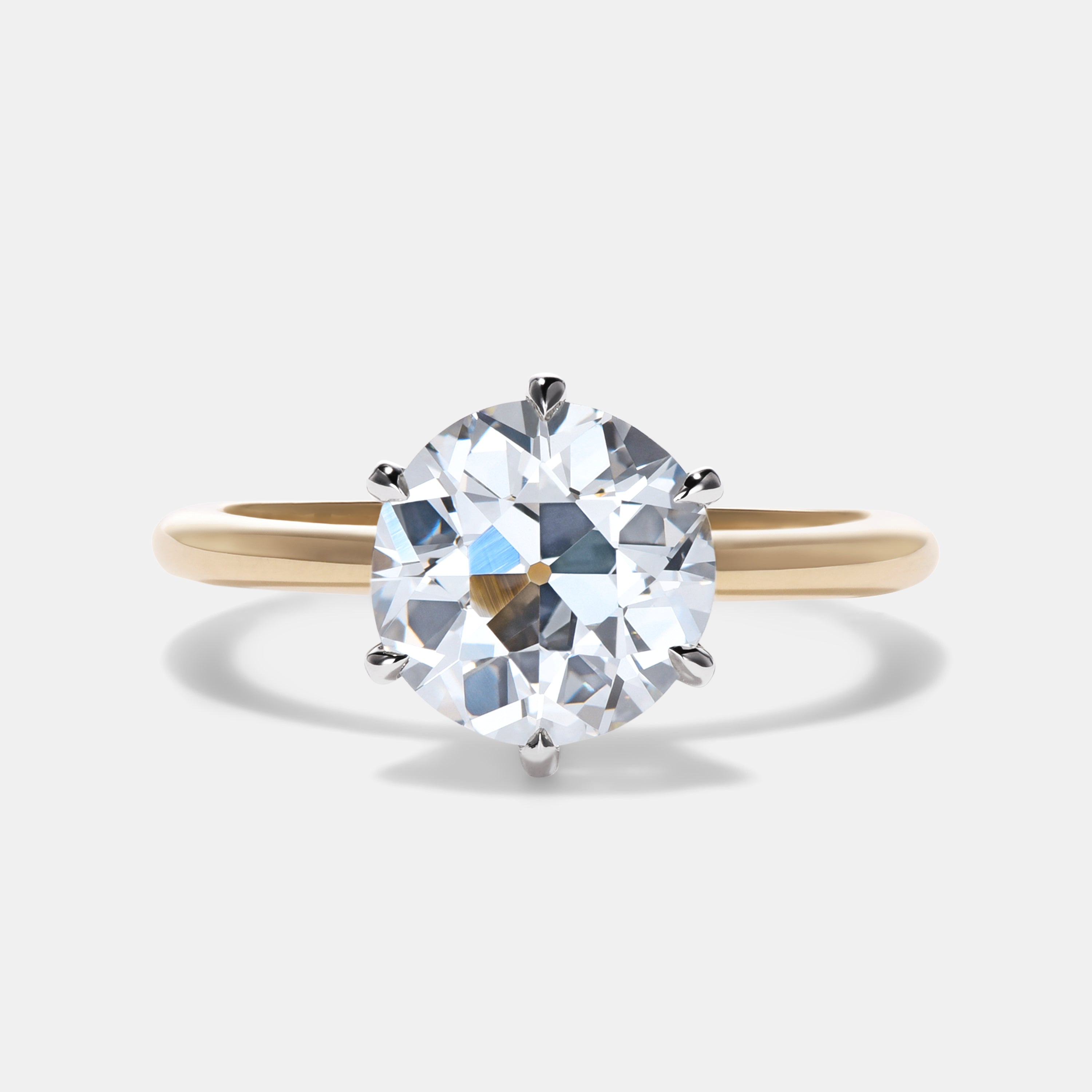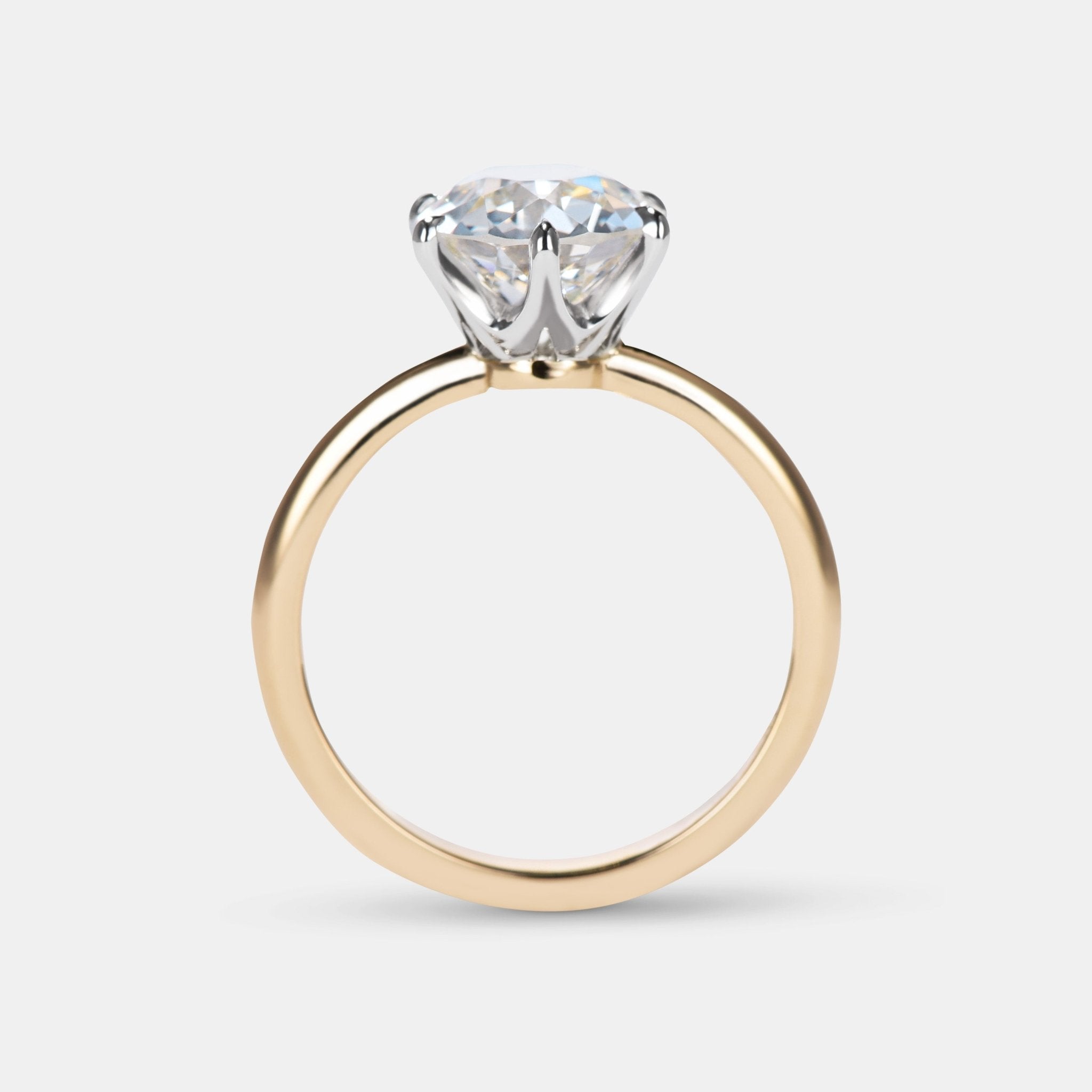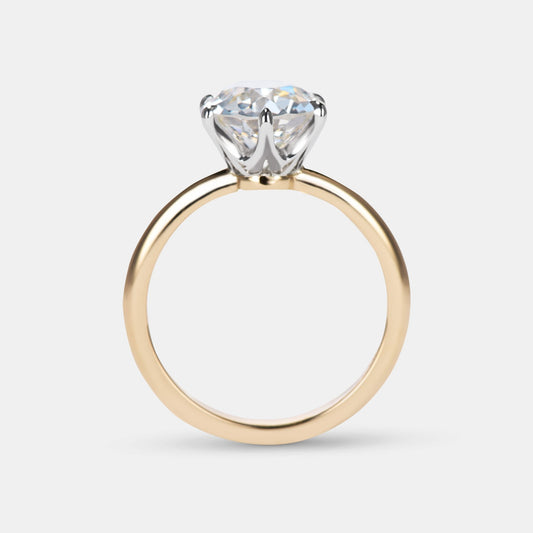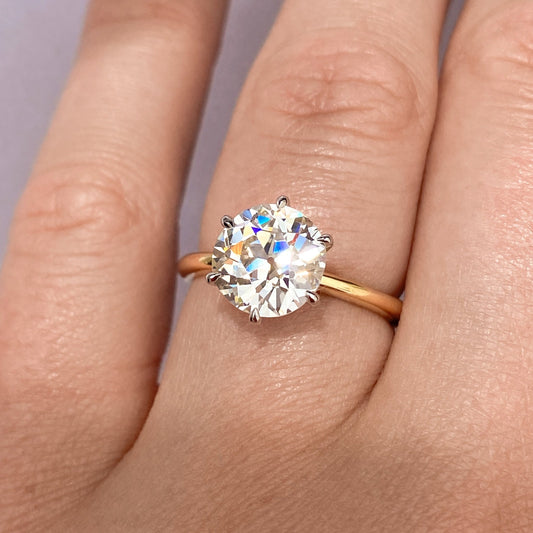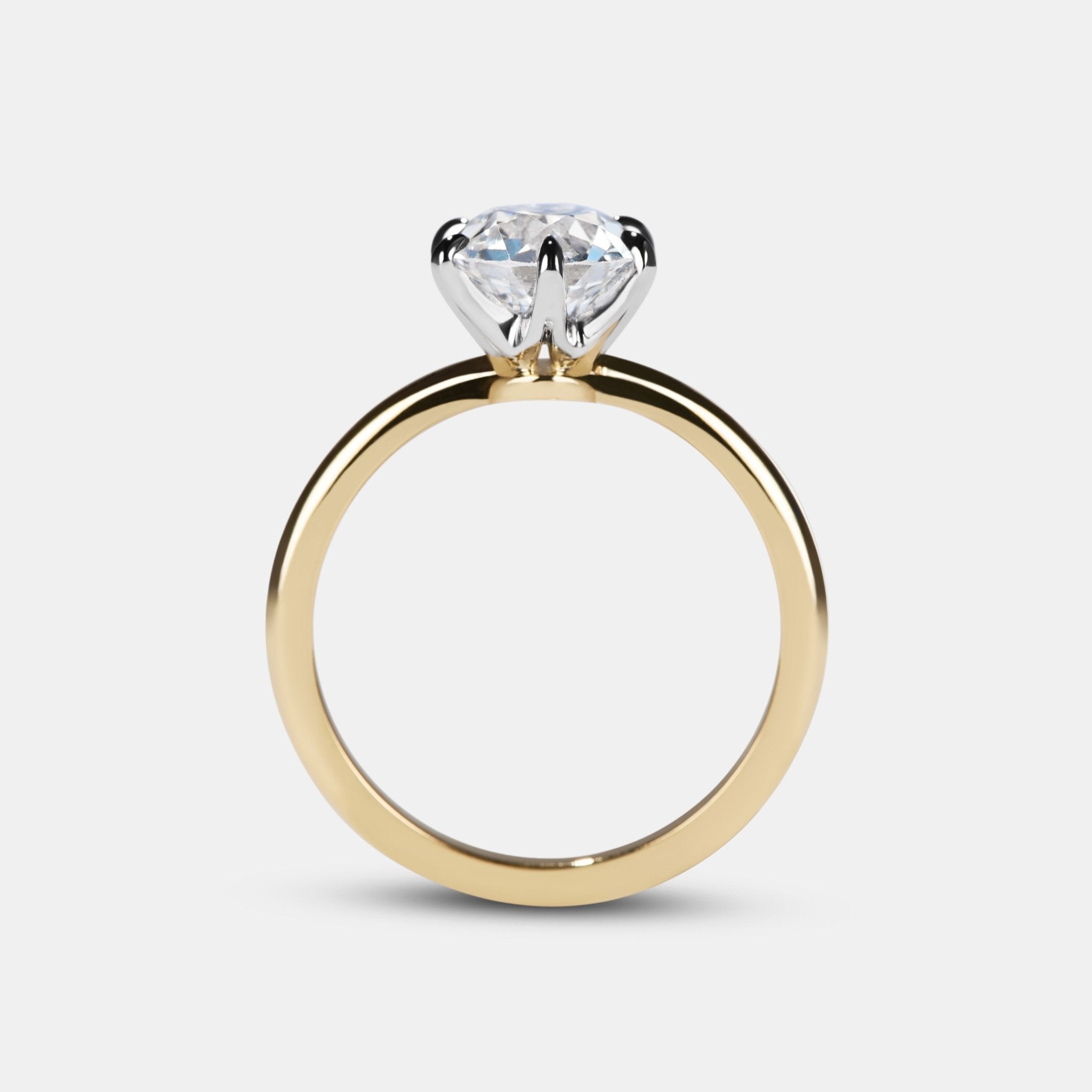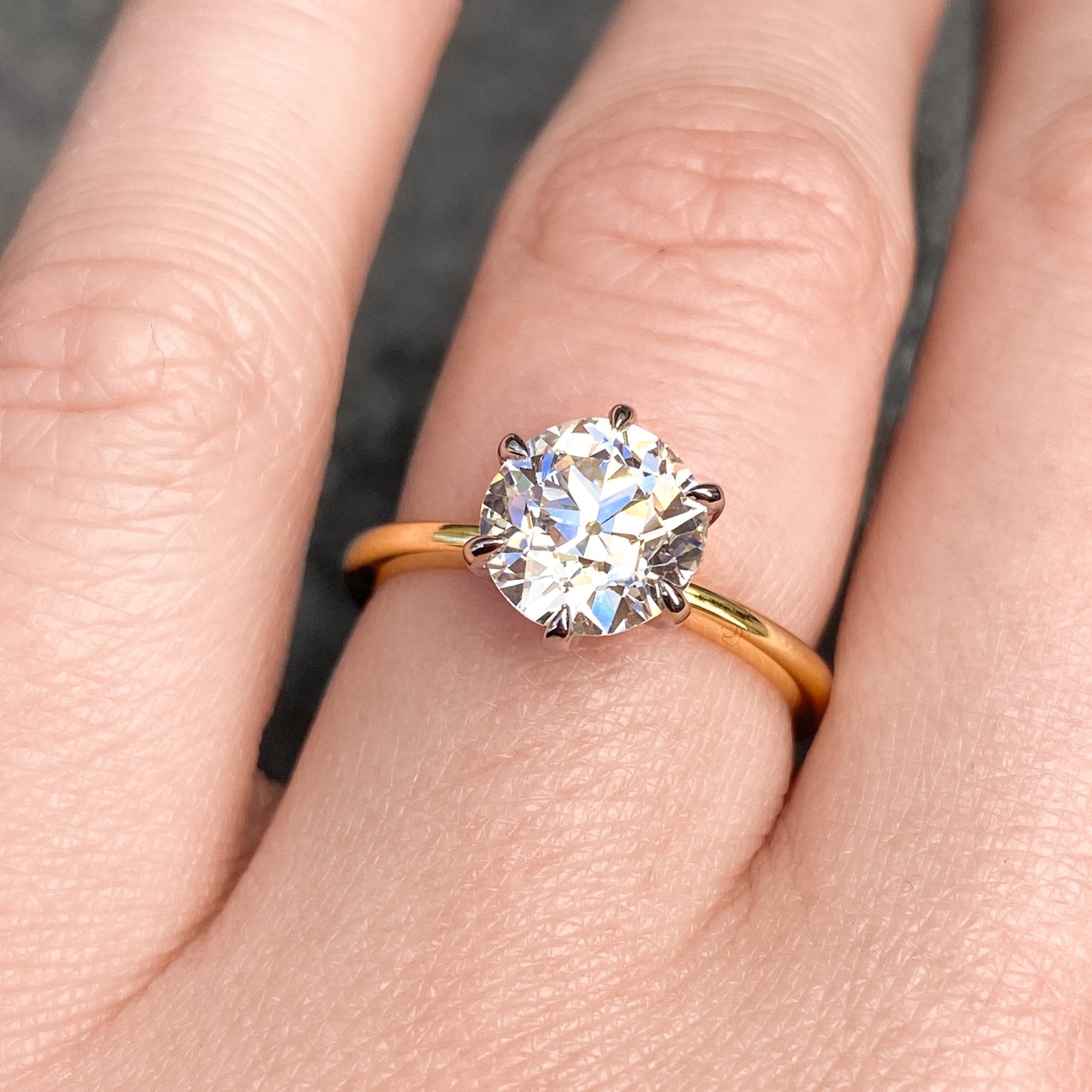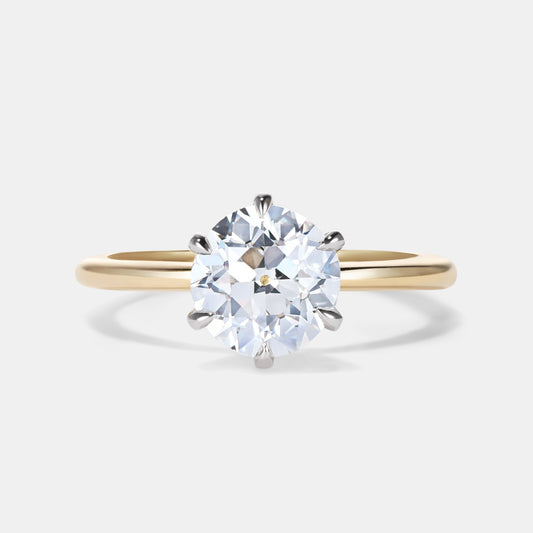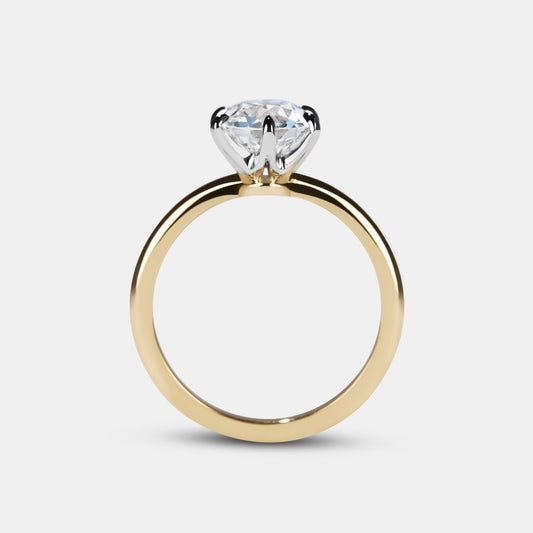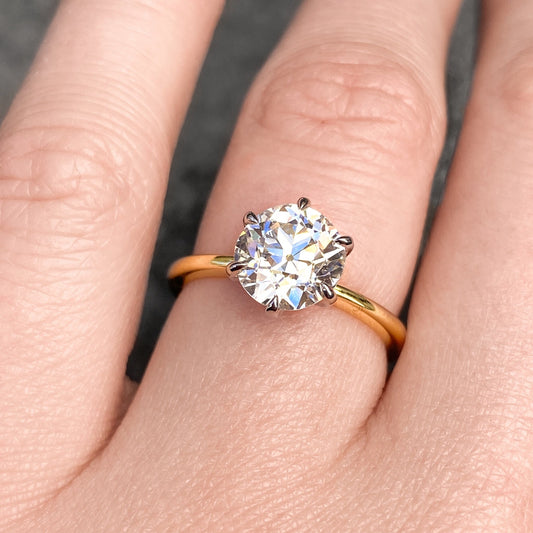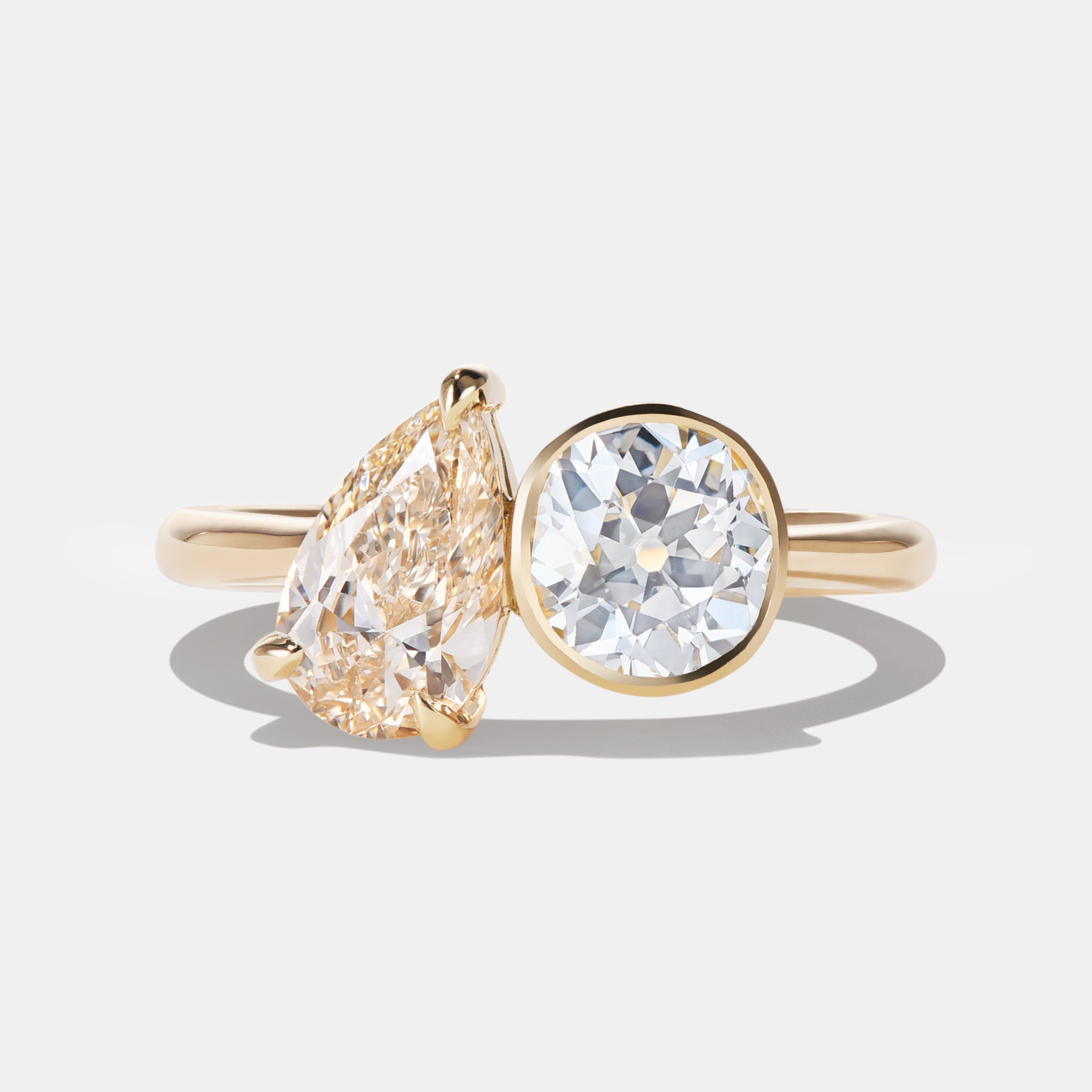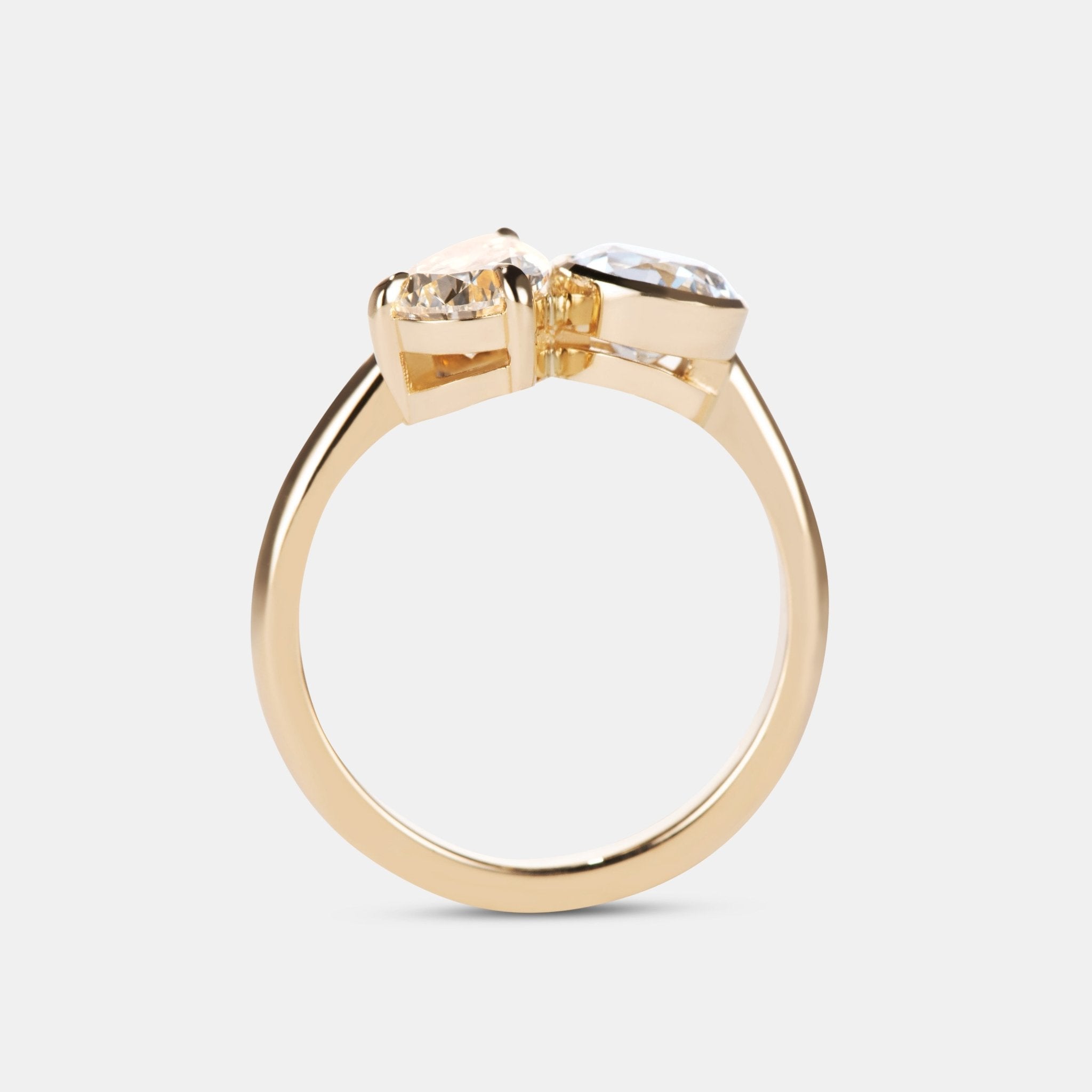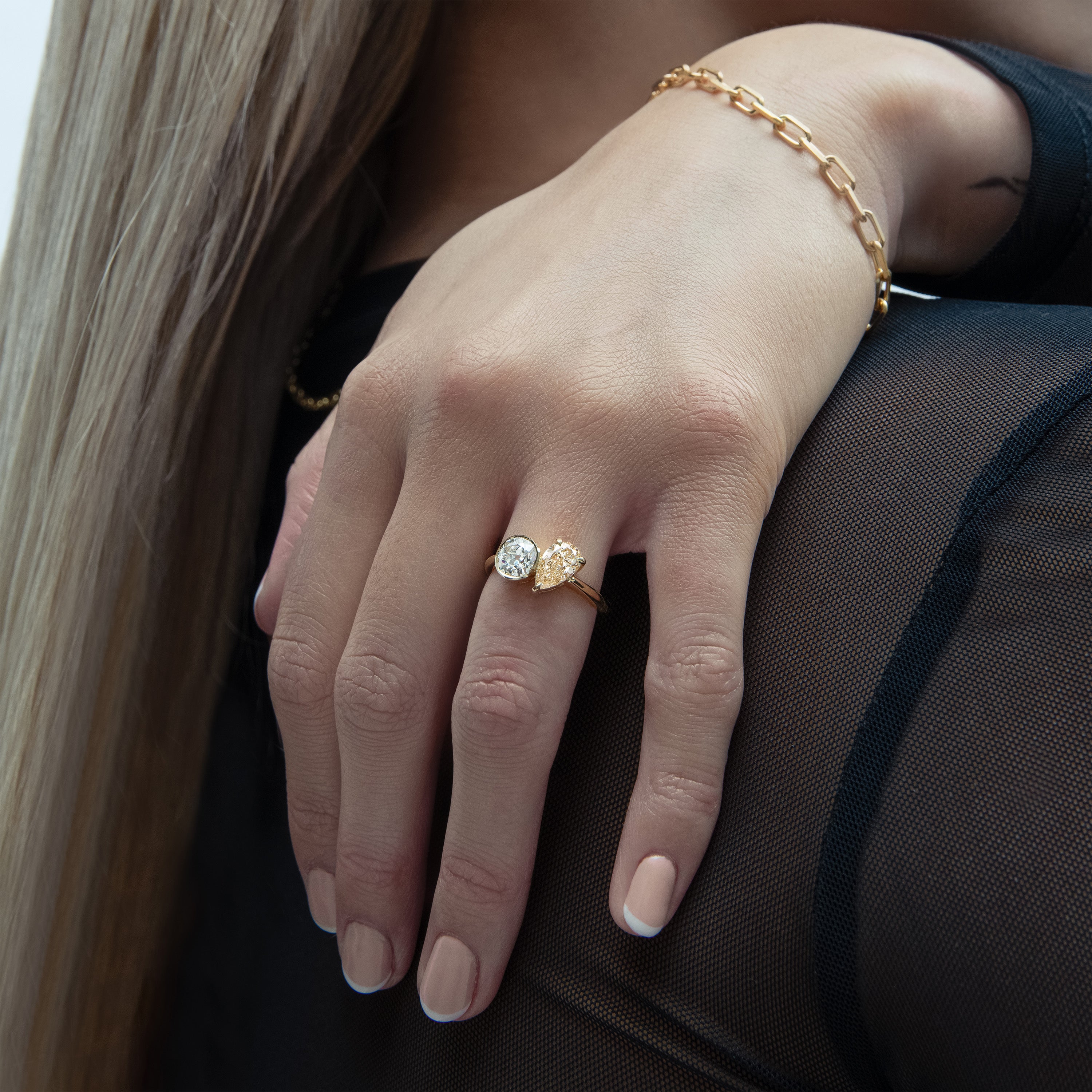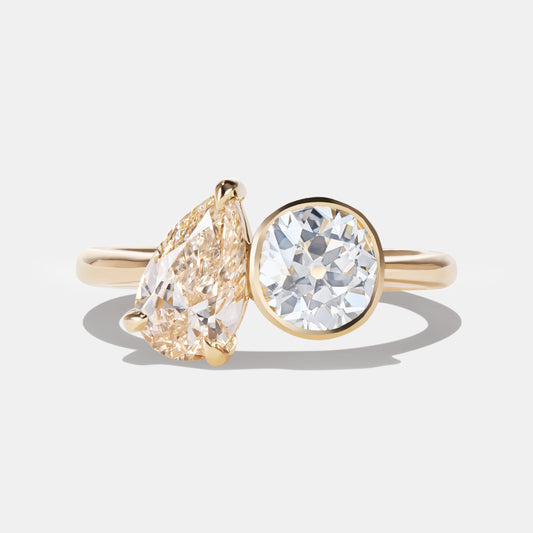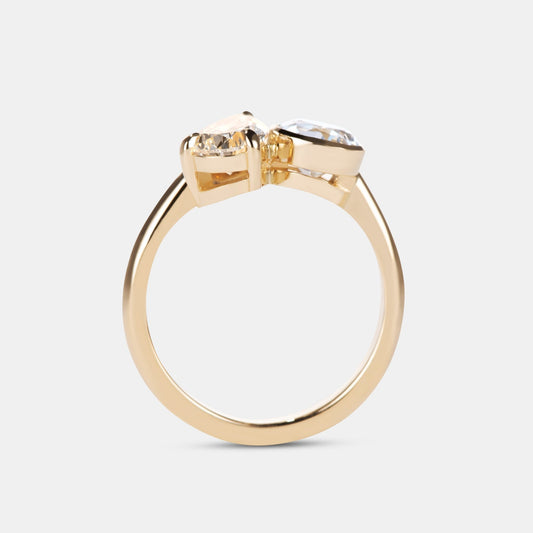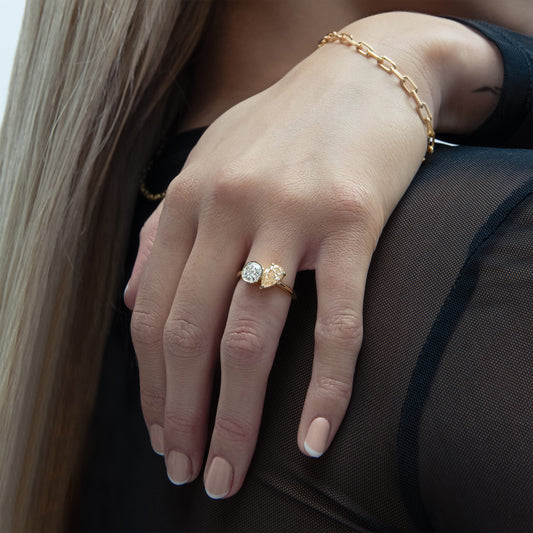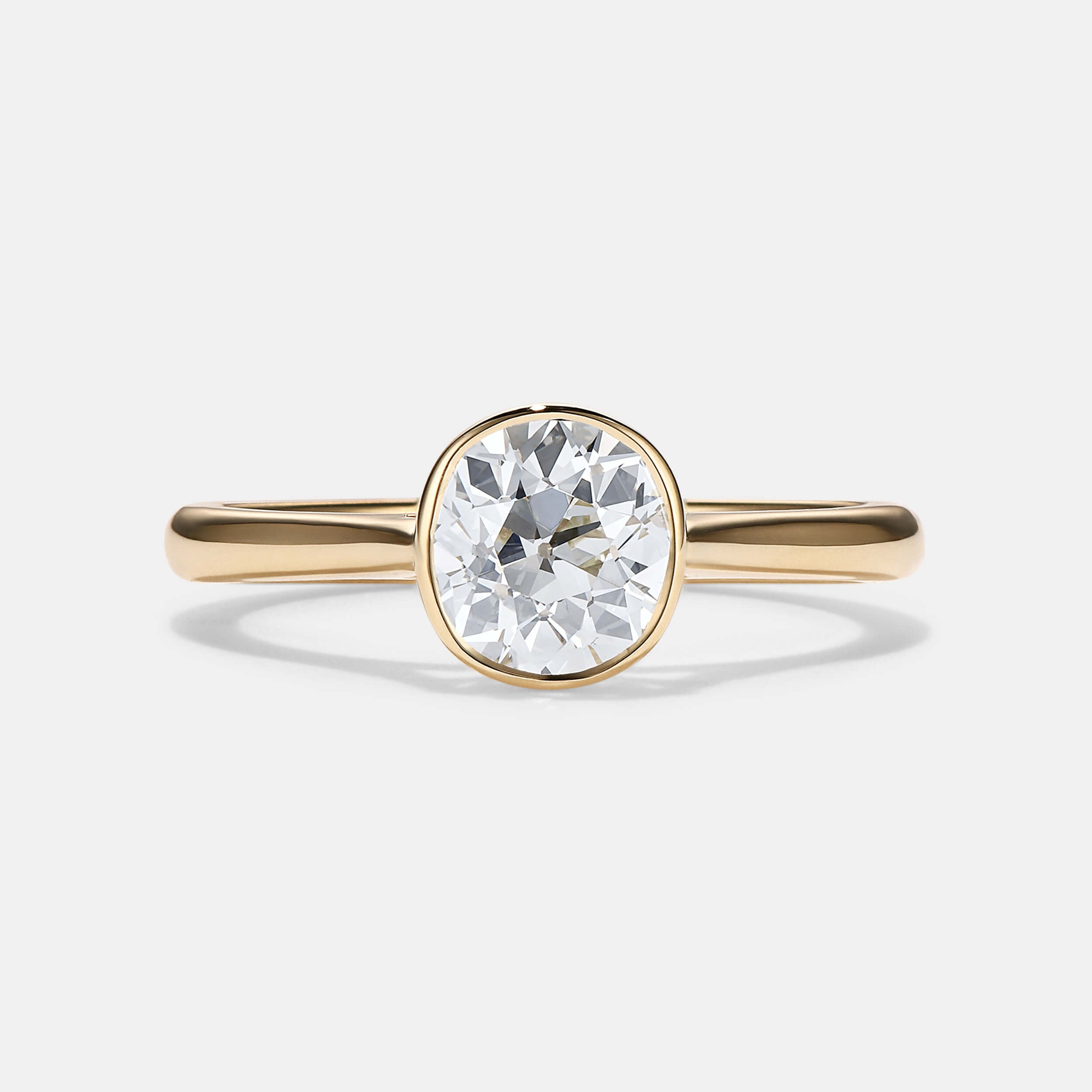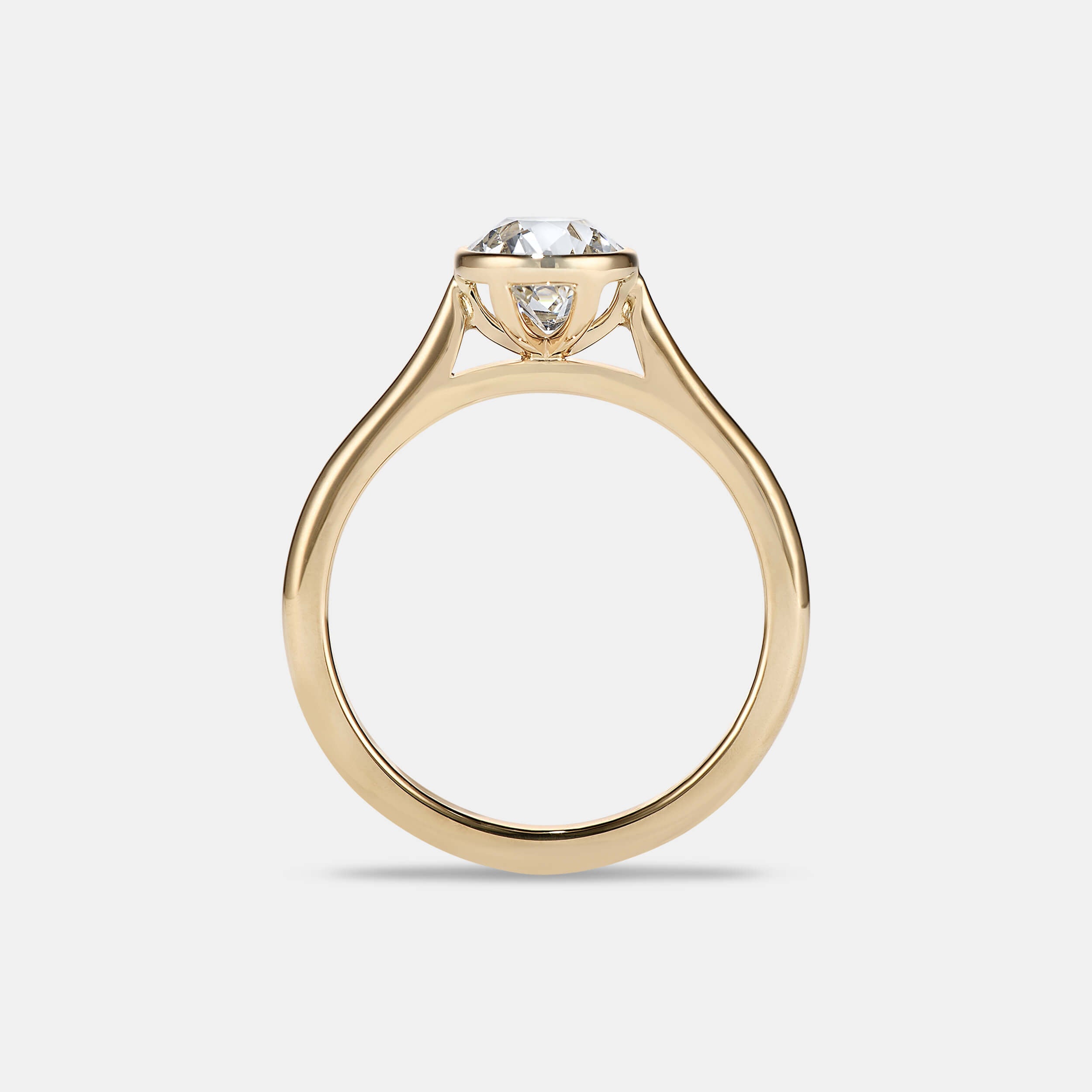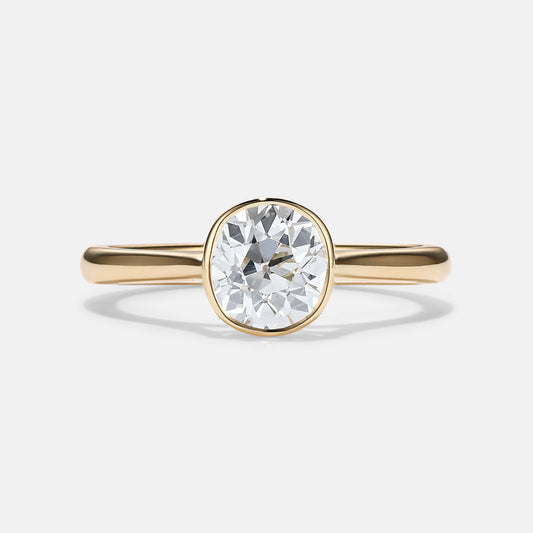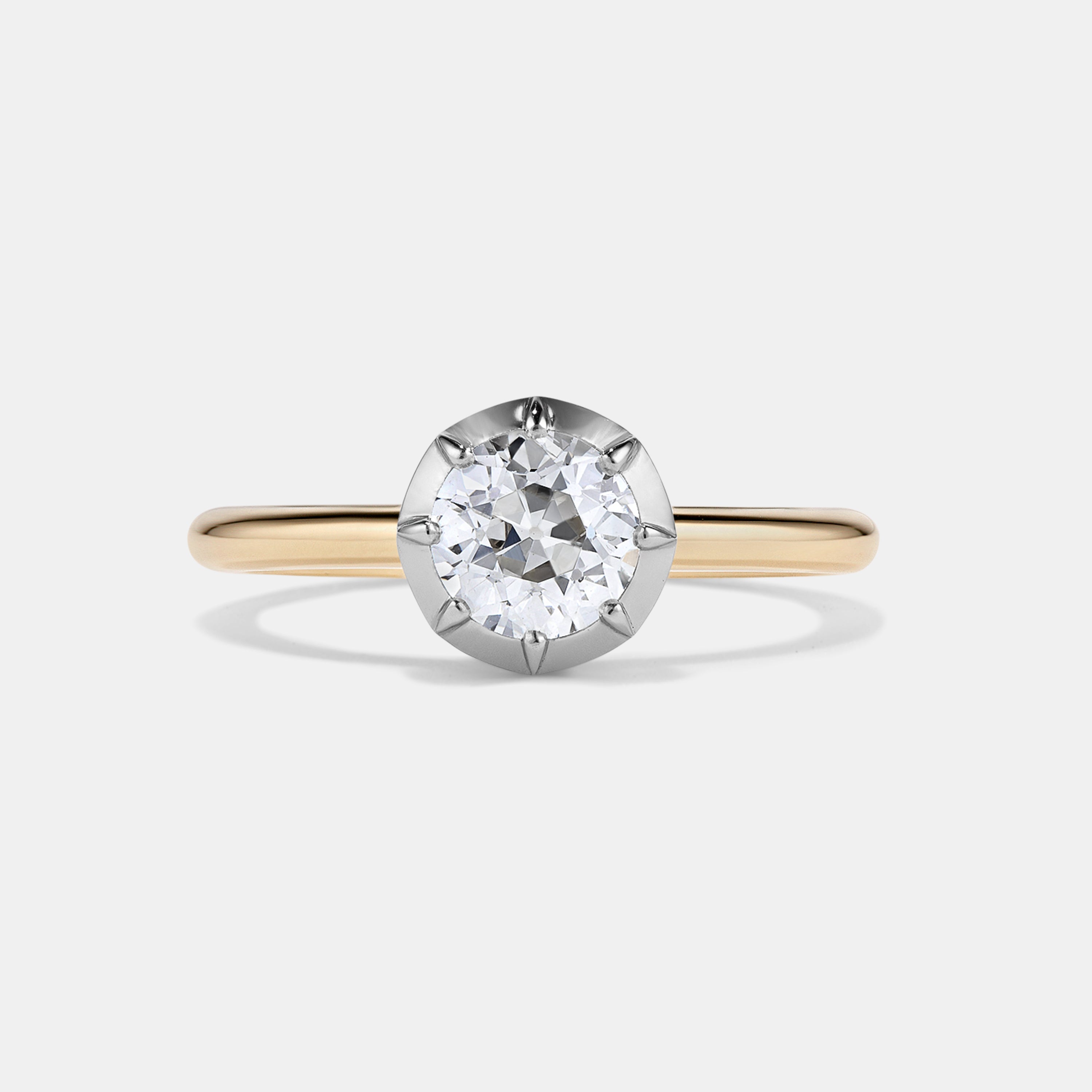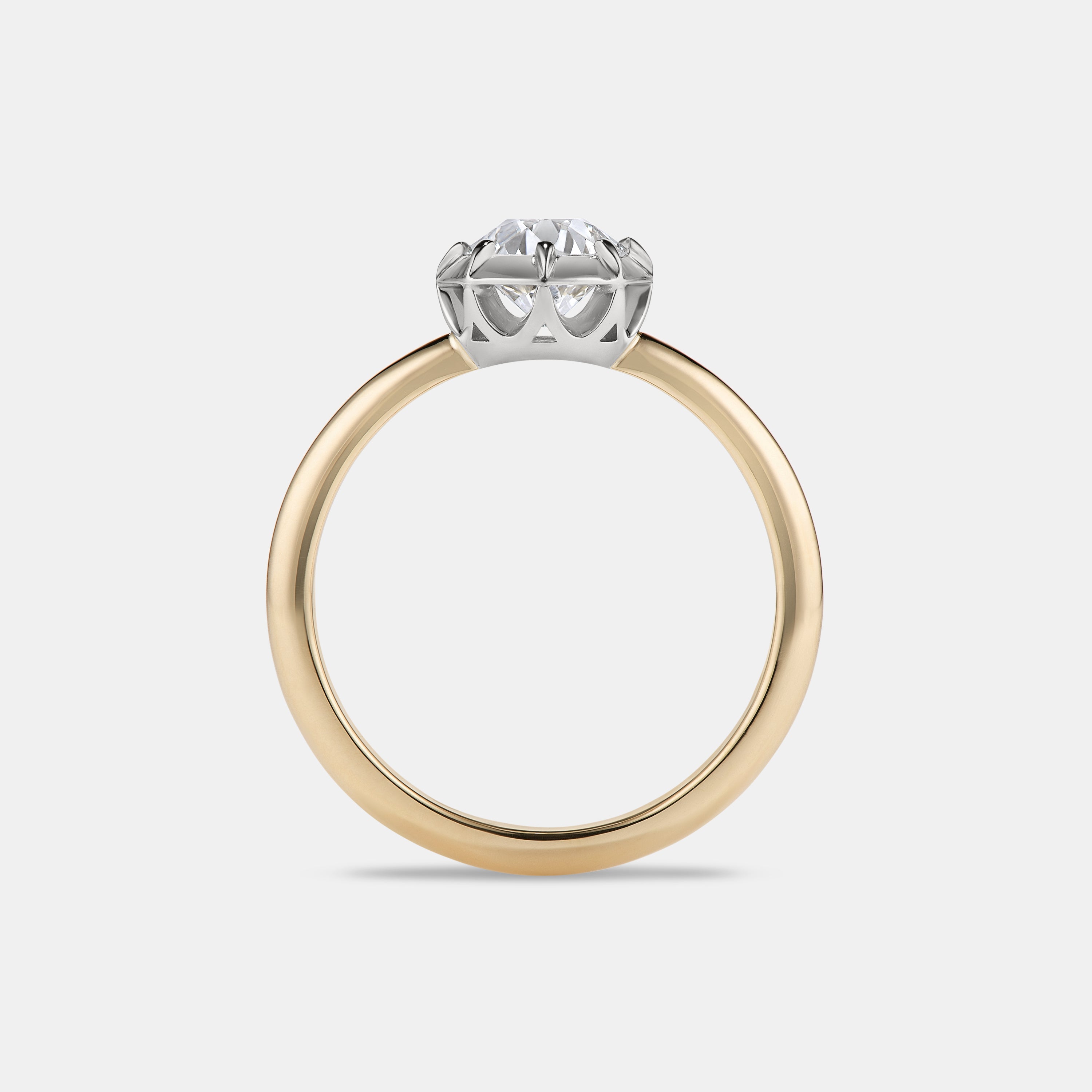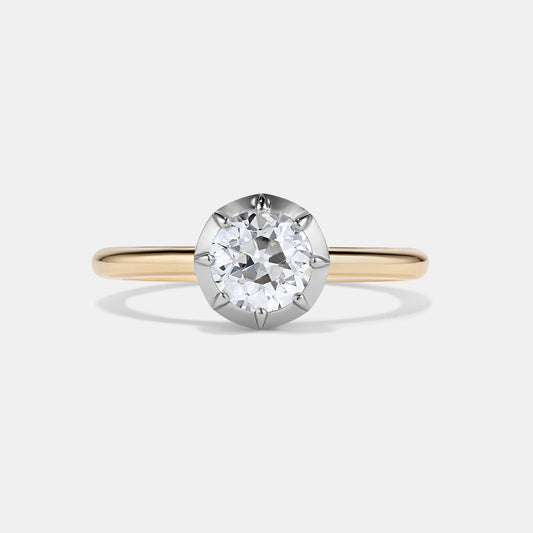Antique Diamond Guide
Discover why Antique Diamonds are rare, beautiful and truly sustainable.
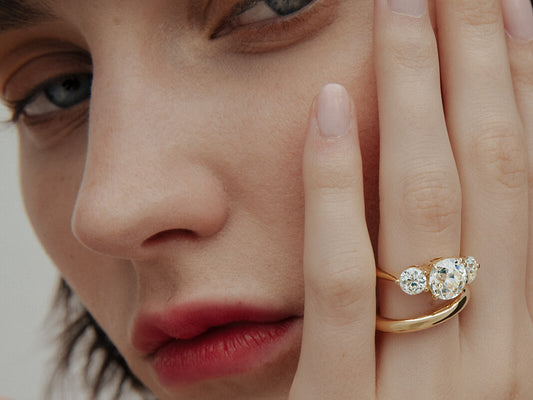
What is an Antique Cut Diamond?
Antique cut diamonds are those mined and cut before 1930. It's important to distinguish between genuine antique diamonds and modern "antique-style" cuts. While modern techniques can replicate some aspects of antique cuts, they often fall short in capturing the unique beauty of true antiques.
An antique diamond is a stone cut in an antique style from a bygone era. Be specific when discussing your needs with a jeweler. If you're seeking a genuine antique, ensure it's described as "antique" rather than just "antique cut." Officially, jewelry over 100 years old is considered antique. We include diamonds from the 1930s and 1940s in our antique and vintage classification.
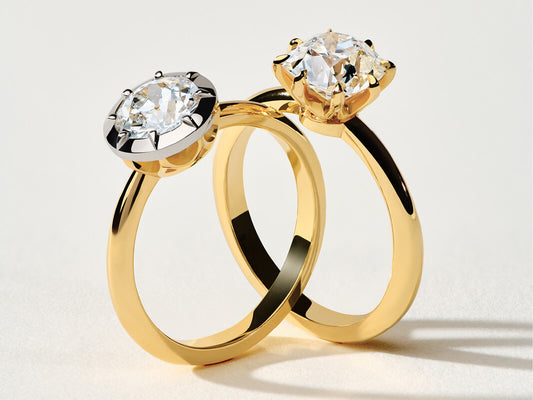
What makes Antique diamonds so special?
Antique diamonds possess several unique qualities that set them apart from modern cuts:
- HAND-CUT CRAFTSMANSHIP: Each antique diamond was cut entirely by hand, relying on the skill and artistry of master cutters. This results in a unique character and charm that can't be replicated by modern precision cutting techniques. Every antique diamond tells the story of its cutter's expertise and artistic vision.
- DISTINCTIVE FACETING: Antique diamonds typically feature larger facets and a higher crown, creating a softer, more romantic "blocky" sparkle. This contrasts with the uniform brilliance of modern cuts, offering a more subtle and elegant play of light that many find captivating.
- RICH HISTORY: Each antique diamond is a relic of the past, having witnessed decades or even centuries of history. These stones may have adorned jewelry worn during significant historical events or been passed down through generations, carrying with them stories and memories that modern diamonds simply cannot match.
- INCREASING RARITY: As many antique diamonds have been recut into modern shapes over the years, truly authentic antique cuts are becoming increasingly scarce. This rarity adds to their value and appeal, making them highly sought after by collectors and enthusiasts.
- ECO-FRIENDLY CHOICE: Opting for an antique diamond is an environmentally conscious decision. These stones are essentially recycled, requiring no new mining and thus having a minimal environmental impact. This aspect appeals to those seeking sustainable and ethical jewelry options.
The methods used to cut these diamonds have been lost to time, as they were passed down through generations of skilled artisans. In today's fast-paced, technology-driven world, these hand-cutting techniques are no longer economically viable, making each antique diamond a truly irreplaceable piece of history.
RARE AND BEAUTIFUL ANTIQUE DIAMONDS
These antique cuts represent significant milestones in diamond cutting history, each reflecting the technological capabilities and aesthetic preferences of its era. Their rarity and unique characteristics make them highly valued by collectors and those seeking a diamond with historical significance.
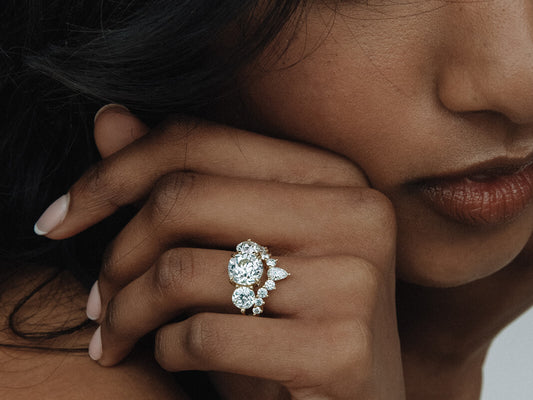
What’s the difference between antique and vintage jewellery?
Antique jewelry is over 100 years old, while vintage pieces are not modern but not old enough to be antique. Both categories often feature more elaborate designs than contemporary pieces, each carrying its own historical significance.
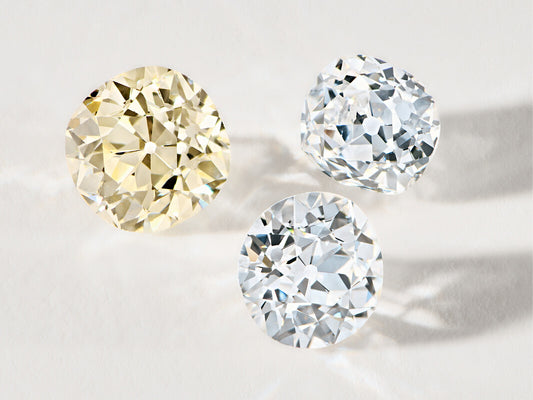
Authentic Antiques vs. Modern ‘Antique-style’ Cuts.
It's crucial to differentiate between genuine antique diamonds and modern "antique-style" cuts. Modern replicas often lack the high crowns and unique cutting qualities of true antiques. Genuine antique diamonds possess characteristics that are extremely difficult to replicate with today's computer-driven and laser cutting technologies.
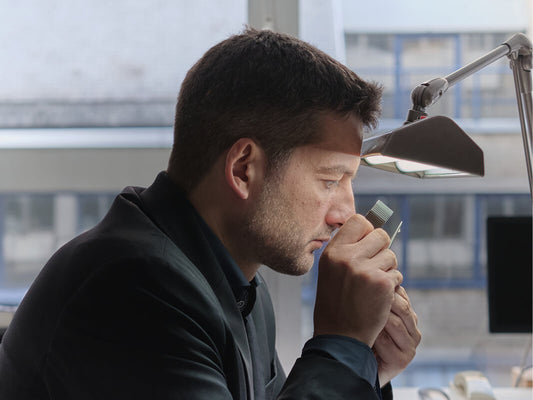
Our Exclusive Antique Diamond Collection
Hamish Whiting, our in-house Gemologist and co-founder, sources our antique diamonds. With extensive experience and training from GIA and HRD, Hamish operates from the Antwerp Diamond Bourse, granting us access to some of the rarest and most beautiful antique diamonds.
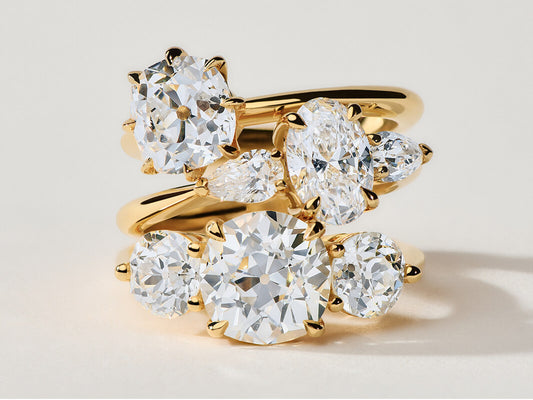
What is the difference between an antique and modern diamond?
Antique diamonds were cut by hand, relying on the jeweler's skill and eye. Modern diamonds, emerging in the 1950s with computer-assisted techniques, are cut to precise, standardized measurements. This mid-20th century shift marks the divide between antique and modern diamonds.

Comparing Antique diamonds to Modern cut Diamonds.
Antique diamonds typically feature:
- Fewer, larger facets for a softer look
- Higher crown angles and smaller tables
- More fire (light dispersion)
- Thinner girdles (Old Mine Cuts have no faceted girdle)
- Larger open culets
- Generally warmer colors (I-J-K or warmer)
- Signs of wear on facet edges
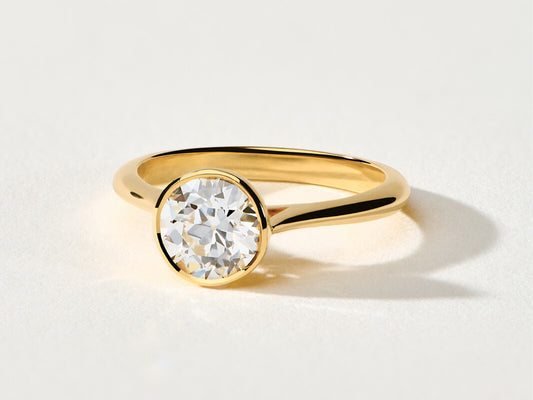
Do old cut diamonds sparkle?
Yes, old cut diamonds do sparkle, though differently from modern cuts. They were often cut for candlelight viewing, giving them a unique glow in certain lighting conditions. While some early cuts like rose may sparkle less, many antique cuts offer a captivating play of light with amazing fire.
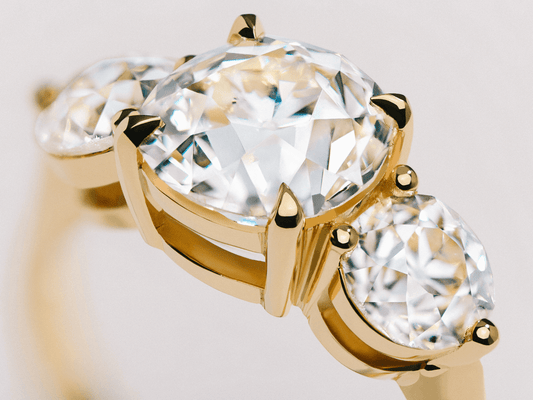
Are antique diamonds more expensive than modern diamonds?
Antique diamond prices are influenced by market demand, which has increased over the past 20 years. As these diamonds age and become scarcer, their value often increases. While they may not sparkle like modern brilliants, their historical significance and rarity contribute to their value.
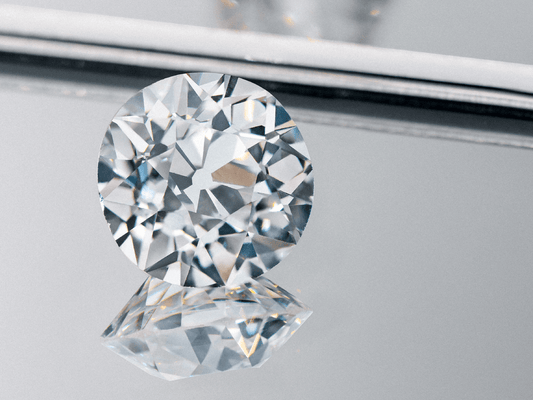
What should I look for when buying an old cut antique diamond?
When considering an old cut antique diamond, it's important to adjust your expectations and criteria. These diamonds typically have warmer colors, often falling in the I-J-K range or warmer. However, due to their unique cut, they often "face up whiter" than modern stones of the same color grade. While grading reports can provide useful information, it's crucial to prioritize your personal taste and emotional response to the stone. Examine the diamond in person if possible, as old cut diamonds each have their own character that may not be fully captured in a report. Consider color and clarity to ensure fair market value, but place less emphasis on cut grade and symmetry, as these were not standardized in antique diamonds. Above all, focus on the overall beauty and charm of the stone rather than adhering strictly to modern grading criteria.
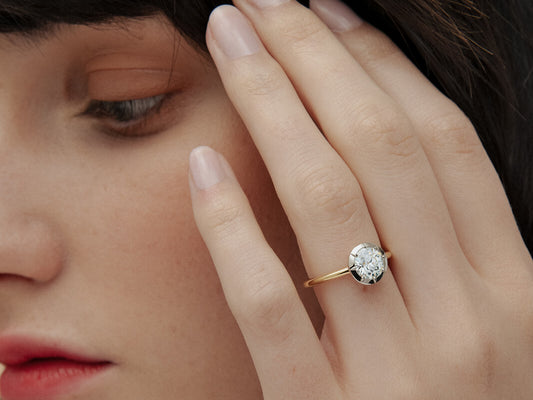
What are the benefits of buying an old cut antique diamond?
Choosing an old cut antique diamond offers several unique advantages. Firstly, these diamonds are an ethical choice, as they reduce the demand for new mining and utilize existing resources. Each antique diamond is inherently unique, hand-cut by skilled artisans of the past, ensuring that your stone is truly one-of-a-kind. These diamonds carry significant historical value, allowing you to own and wear a piece of history. As technology continues to advance and we move further away from hand-crafted jewelry, these antique diamonds become increasingly rare and valuable. They carry the romance and charm of a bygone era, offering a connection to the past that modern cuts simply cannot replicate. Owning an antique diamond is not just about having a beautiful gemstone; it's about possessing a small piece of human history and craftsmanship that will only become more precious with time.
ANTIQUE DIAMOND RINGS
View all-
Dion 2.09ct Antique Old Mine Cut Diamond Solitaire Engagement Ring
 Dion 2.09ct Antique Old Mine Cut Diamond Solitaire Engagement Ring
Dion 2.09ct Antique Old Mine Cut Diamond Solitaire Engagement Ring- Regular price
- $33,000 AUD
- Regular price
-
- Sale price
- $33,000 AUD
- Unit price
- per
Dion 2.09ct Antique Old Mine Cut Diamond Solitaire Engagement RingDion 2.09ct Antique Old Mine Cut Diamond Solitaire Engagement Ring- Regular price
- $33,000 AUD
- Regular price
-
- Sale price
- $33,000 AUD
- Unit price
- per
-
Dani 2.07ctw Diamond Toi Et Moi Engagement Ring
 Dani 2.07ctw Diamond Toi Et Moi Engagement Ring
Dani 2.07ctw Diamond Toi Et Moi Engagement Ring- Regular price
- $20,000 AUD
- Regular price
-
- Sale price
- $20,000 AUD
- Unit price
- per
Dani 2.07ctw Diamond Toi Et Moi Engagement RingDani 2.07ctw Diamond Toi Et Moi Engagement Ring- Regular price
- $20,000 AUD
- Regular price
-
- Sale price
- $20,000 AUD
- Unit price
- per
-
Enid 1.24ctw Antique Old European Cut Diamond Eternity Ring
 Enid 1.24ctw Antique Old European Cut Diamond Eternity Ring
Enid 1.24ctw Antique Old European Cut Diamond Eternity Ring- Regular price
- $8,500 AUD
- Regular price
-
- Sale price
- $8,500 AUD
- Unit price
- per
Enid 1.24ctw Antique Old European Cut Diamond Eternity RingEnid 1.24ctw Antique Old European Cut Diamond Eternity Ring- Regular price
- $8,500 AUD
- Regular price
-
- Sale price
- $8,500 AUD
- Unit price
- per
-
Elizabeth 2.50ct Antique Old European Cut Diamond Solitaire Engagement Ring
 Elizabeth 2.50ct Antique Old European Cut Diamond Solitaire Engagement Ring
Elizabeth 2.50ct Antique Old European Cut Diamond Solitaire Engagement Ring- Regular price
- $40,000 AUD
- Regular price
-
- Sale price
- $40,000 AUD
- Unit price
- per
Elizabeth 2.50ct Antique Old European Cut Diamond Solitaire Engagement RingElizabeth 2.50ct Antique Old European Cut Diamond Solitaire Engagement Ring- Regular price
- $40,000 AUD
- Regular price
-
- Sale price
- $40,000 AUD
- Unit price
- per
-
Elizabeth 1.85ct Antique Old European Cut Diamond Solitaire Engagement Ring
 Elizabeth 1.85ct Antique Old European Cut Diamond Solitaire Engagement Ring
Elizabeth 1.85ct Antique Old European Cut Diamond Solitaire Engagement Ring- Regular price
- $45,000 AUD
- Regular price
-
- Sale price
- $45,000 AUD
- Unit price
- per
Elizabeth 1.85ct Antique Old European Cut Diamond Solitaire Engagement RingElizabeth 1.85ct Antique Old European Cut Diamond Solitaire Engagement Ring- Regular price
- $45,000 AUD
- Regular price
-
- Sale price
- $45,000 AUD
- Unit price
- per
-
Dani 2.08ctw Diamond Toi Et Moi Engagement Ring
 Dani 2.08ctw Diamond Toi Et Moi Engagement Ring
Dani 2.08ctw Diamond Toi Et Moi Engagement Ring- Regular price
- $17,500 AUD
- Regular price
-
- Sale price
- $17,500 AUD
- Unit price
- per
Dani 2.08ctw Diamond Toi Et Moi Engagement RingDani 2.08ctw Diamond Toi Et Moi Engagement Ring- Regular price
- $17,500 AUD
- Regular price
-
- Sale price
- $17,500 AUD
- Unit price
- per
-
Isabella 1.27ct Old Mine Cut Antique Diamond Solitaire Engagement Ring
 Isabella 1.27ct Old Mine Cut Antique Diamond Solitaire Engagement Ring
Isabella 1.27ct Old Mine Cut Antique Diamond Solitaire Engagement Ring- Regular price
- $14,000 AUD
- Regular price
-
- Sale price
- $14,000 AUD
- Unit price
- per
Isabella 1.27ct Old Mine Cut Antique Diamond Solitaire Engagement RingIsabella 1.27ct Old Mine Cut Antique Diamond Solitaire Engagement Ring- Regular price
- $14,000 AUD
- Regular price
-
- Sale price
- $14,000 AUD
- Unit price
- per
-
Georgia 0.92ct Antique Old Mine Cut Diamond Solitaire Engagement Ring
 Georgia 0.92ct Antique Old Mine Cut Diamond Solitaire Engagement Ring
Georgia 0.92ct Antique Old Mine Cut Diamond Solitaire Engagement Ring- Regular price
- $10,700 AUD
- Regular price
-
- Sale price
- $10,700 AUD
- Unit price
- per
Georgia 0.92ct Antique Old Mine Cut Diamond Solitaire Engagement RingGeorgia 0.92ct Antique Old Mine Cut Diamond Solitaire Engagement Ring- Regular price
- $10,700 AUD
- Regular price
-
- Sale price
- $10,700 AUD
- Unit price
- per
ANTIQUE DIAMOND FAQ
Eco-friendly: Antique diamonds are repurposed, as opposed to newly mined, making them a more environmentally conscious choice.
Antique diamonds were cut entirely by hand giving each stone a unique character and charm, versus modern cut diamonds which are precision cut using new technologies and therefore very uniform in appearance.
Antique diamonds have larger faceting and a softer “blocky” sparkle in contrast to the more “blingy” appearance of modern cut diamonds.
Antique diamonds are steeped in history, each one with a unique story, each a relic of the past.
Rarity, Antique diamonds are very difficult to source as many have been recut into modern cut diamonds over the years. The exact methods of cutting an antique diamond have been lost as they were taught generation to generation and in today’s fast paced world hand cutting methods would be deemed uneconomical.






